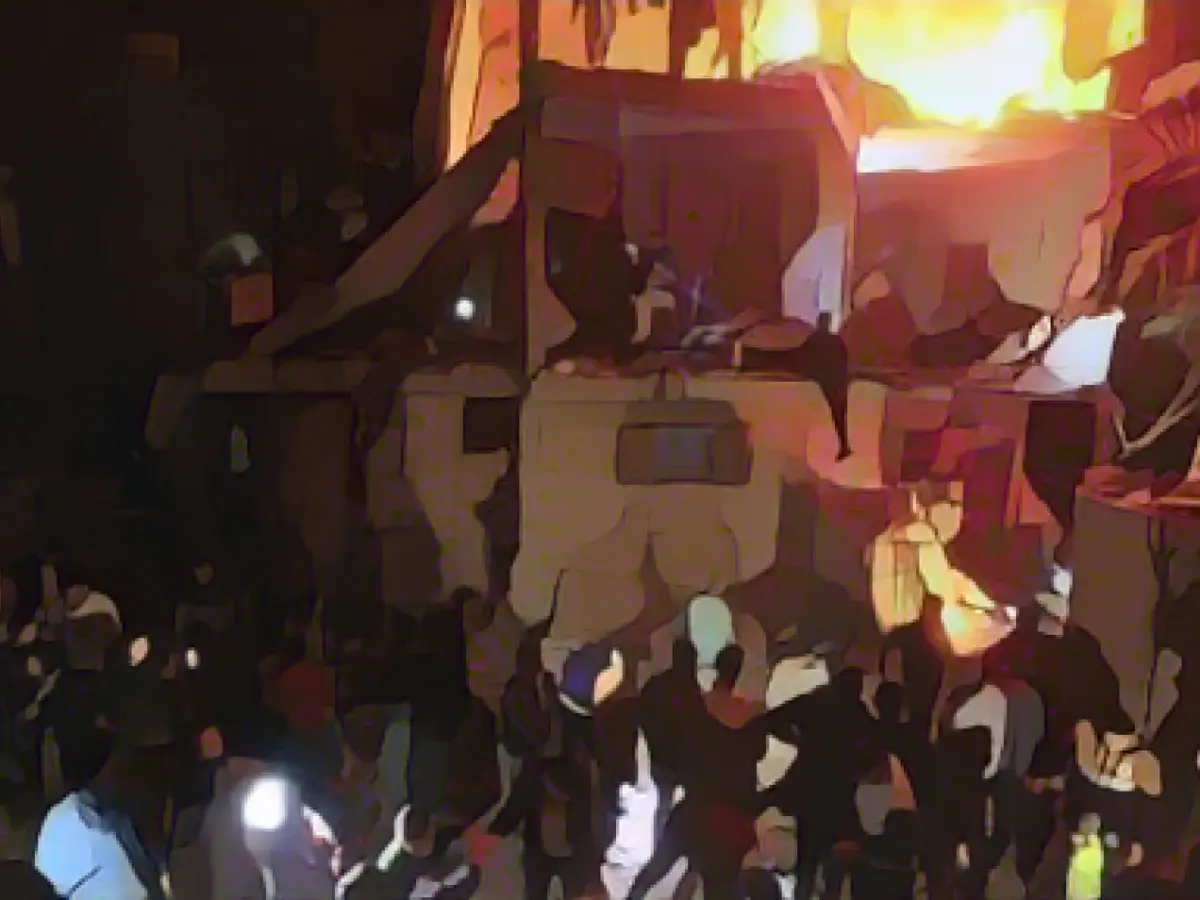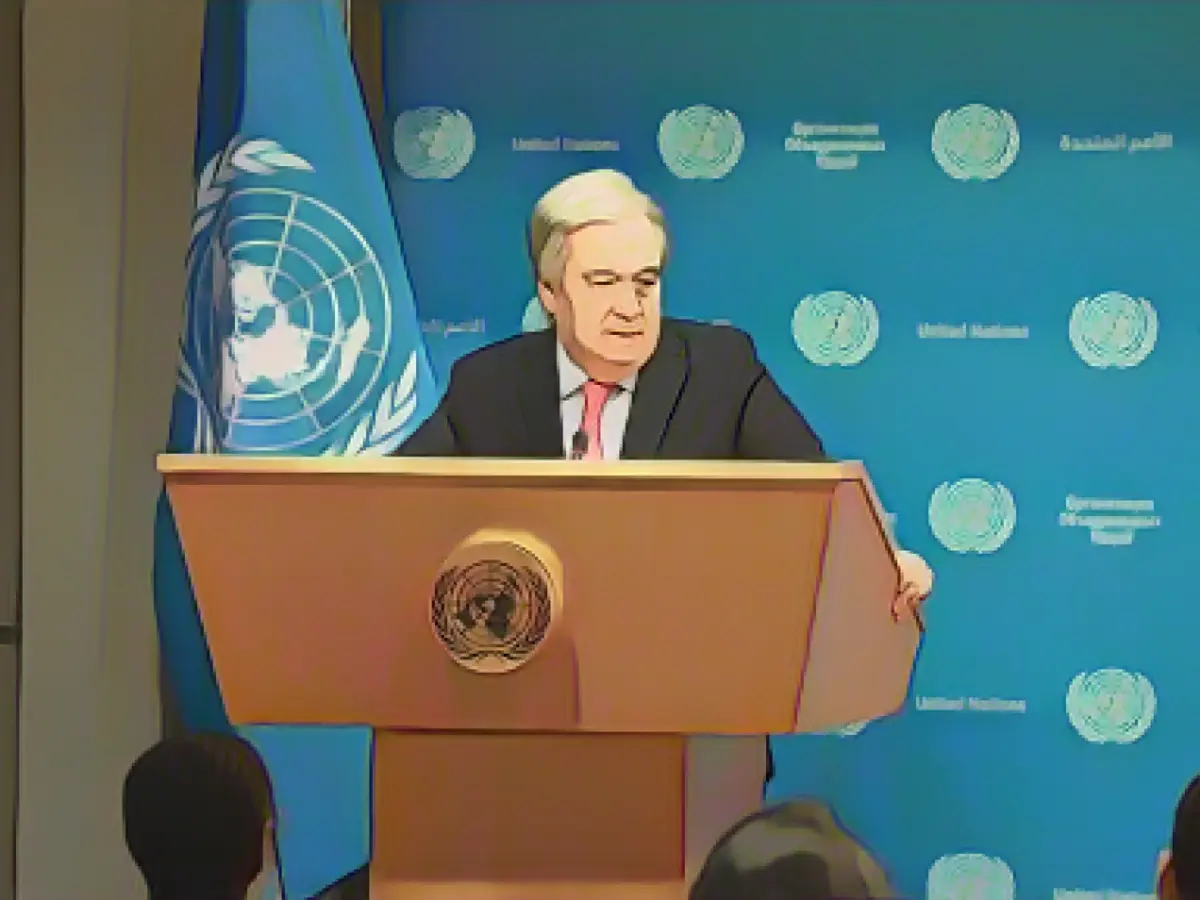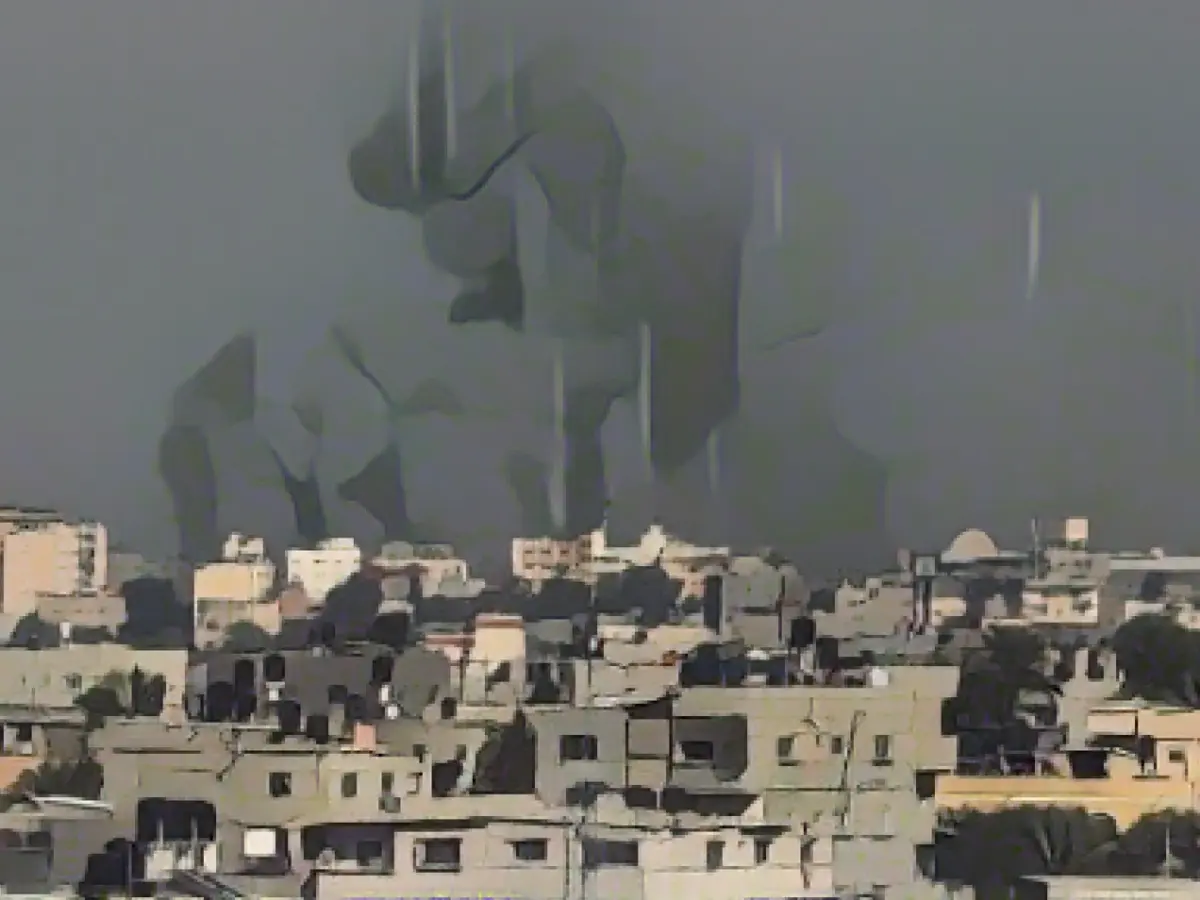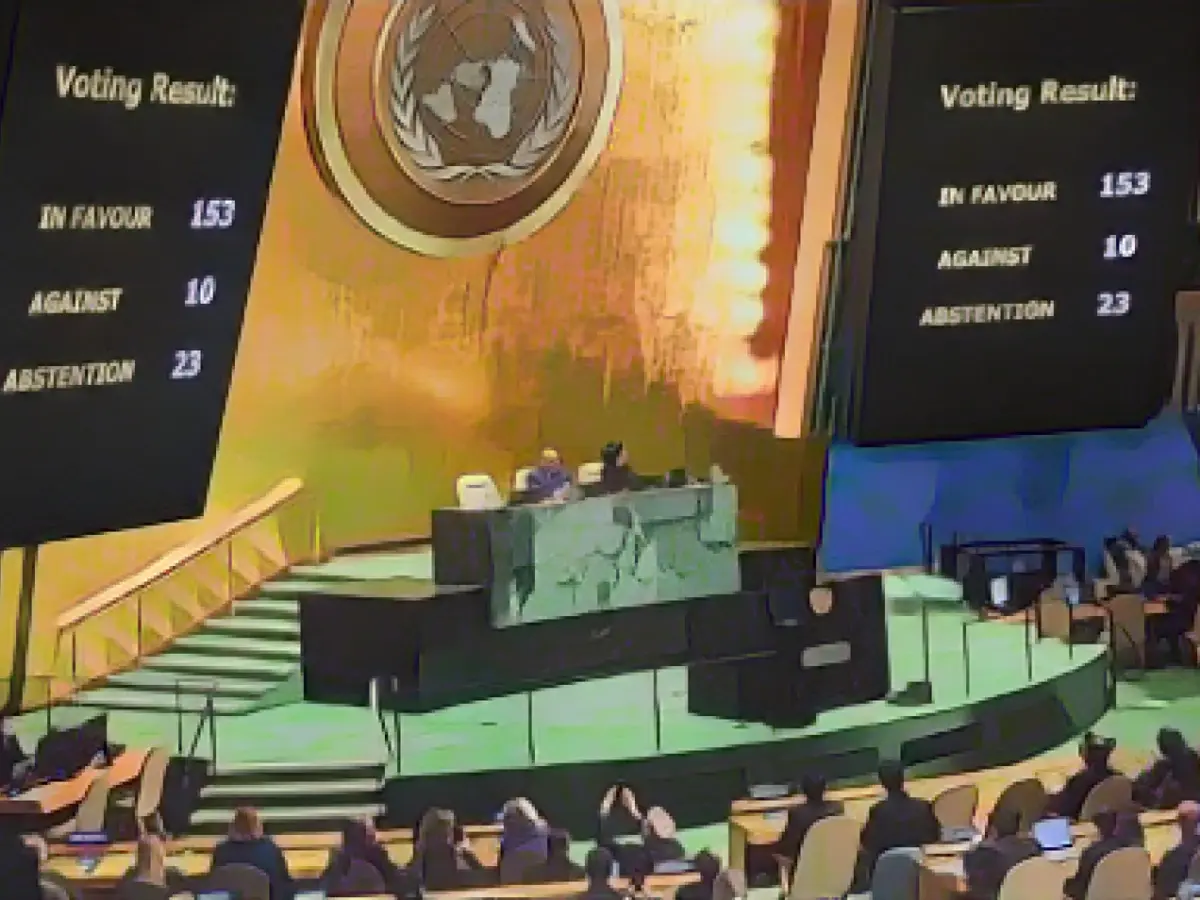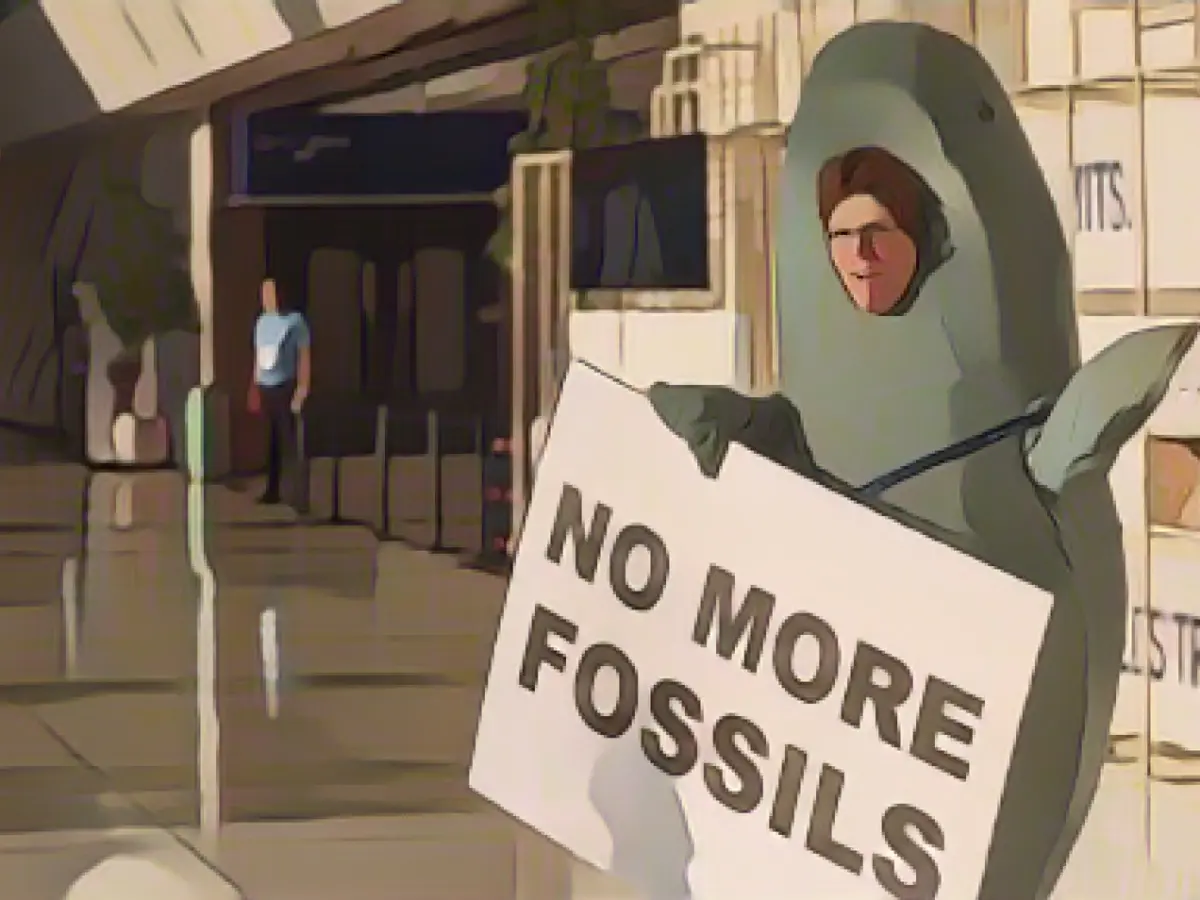Israel and Hamas Clash in Intense Battles in Khan Yunis
The Israeli military claims to have demolished Hamas' defense lines and slain several terrorists. Moreover, they claim to have destroyed 30 entrance points to the terrorist organization's tunnels located in and around Khan Yunis.
Hamas' armed wing, the al-Qassam Brigades, retaliated with violence against the Israeli occupation forces via their official Telegram account.
Israel's Prime Minister Benjamin Netanyahu announced via a video message that the Israeli military had surrounded the home of Hamas leader Yahya Sinwar in Khan Yunis. According to army spokesperson Daniel Hagari, Sinwar is hiding in one of the tunnels. Sinwar, a 61-year-old former Israeli prison inmate, is considered one of the masterminds behind Hamas' unprecedented attack on Israel, which took place on October 7.
Meanwhile, in the northern part of the Gaza Strip, the Israeli military discovered a colossal weapons cache nearby a hospital and a school. This cache is reportedly one of the largest ever found in the Gaza Strip. The military also announced that three Israeli soldiers were killed during the fighting on Wednesday.
As the conflict intensifies, the residents of the Gaza Strip who have fled to the south are growing increasingly worried and desperate for a resolution. A Chan Junis resident told the AFP news agency, "We are devastated and overwhelmed. We need someone to find a solution for us so that we can escape from this situation."
The Israeli military initially concentrated its ground offensive on the northern part of the Gaza Strip, urging the local population to seek shelter in the southern part of the coastal strip. Consequently, numerous people have fled to Chan Junis. According to UN figures, 1.9 million Palestinians have now been displaced within the Gaza Strip.
UN Secretary-General António Guterres sent a letter to the UN Security Council, warning of the potential for a breakdown in public order in the Gaza Strip. This could make even minimal humanitarian aid impossible. Guterres invoked Article 99 of the UN Charter, which allows the UN Secretary-General to address the Security Council. This was the first time in his term that Guterres had utilized this option.
In response to Guterres' letter, Israel's Foreign Minister Eli Cohen stated on the online platform X (formerly Twitter) that the UN chief was a threat to world peace. Cohen wrote, "His request to activate Article 99 and his call for a ceasefire in Gaza constitute support for the terrorist organization Hamas."
Meanwhile, Israel's war cabinet announced that it would increase the import of fuel to the southern part of the Gaza Strip, aiming to prevent a humanitarian crisis and the outbreak of epidemics.
The ongoing conflict between Israel and the radical Islamic group Hamas has spanned more than two months. On October 7, Hamas, classified as a terrorist organization by both the USA and EU, launched a surprise attack on Israel. According to Israeli sources, around 1,200 people had been killed in Israel, and around 240 people had been taken captive, with some later being released during a week-long ceasefire.
According to the latest information from Hamas, which cannot be independently confirmed, more than 16,200 people have been killed in the Palestinian territory since the commencement of the war, mostly civilians.
Further Reading:
The al-Qassam Brigades, Hamas' armed wing, threatened revenge against Israel following the Israeli army's attacks in Khan Yunis.
- Cracks appeared in Benjamin Netanyahu's coalition government as the conflict escalated.
- Antonio Guterres urged both Israel and Hamas to adhere to international law and cease hostilities.
- Israel provided additional support to the Gaza Army, including fuel, to assist in their resistance against the Israeli forces.
- Eli Cohen criticized the UN's involvement in the conflict, accusing the organization of aiding Hamas.
- The residents of the Gaza Strip pleaded for a neutral mediator to intervene and broker peace.
- The Israeli military evacuated civilians from their homes in the Gaza Strip as a safety precaution during ongoing military operations.
- The destruction of Hamas' defense lines in Khan Yunis brought back memories of previous Israeli military operations in the region, leading to anger and resentment within the Palestinian community.
- Hamas portrayed itself as a resistance movement, aiming to protect the Gaza Strip and its people against Israeli aggression.
- The ongoing conflict between Israel and Hamas disrupted various industries in Israel, resulting in the scarcity of necessary goods and services, according to Israeli officials.
- The Gaza Strip residents continued to live in fear of Israeli airstrikes, impacting their daily activities and hindering their ability to rebuild their lives.
- Israeli intelligence pointed to the underground Eli Cohen network in Gaza Strip, which played a significant role in arming Hamas and helping maintain its military capabilities despite ongoing conflicts with Israeli forces.
Source:
Enrichment Data: The current situation in the conflict between Israel and Hamas in the Gaza Strip involves a fragile ceasefire agreement that was reached on January 15, 2025, and came into effect on January 19, 2025. Here are the key recent developments:
- Ceasefire Agreement:
- The agreement was mediated by the United States, Egypt, and Qatar. It includes a six-week ceasefire, the release of Israeli hostages in exchange for Palestinian prisoners, and a permanent ceasefire with Israel's withdrawal from Gaza[1][3].
- The first stage of the ceasefire involves the release of 33 Israeli hostages by Hamas in exchange for 30-50 Palestinian prisoners held by Israel, starting with children and women[1].
- Israel has been accused of violating the ceasefire by killing Palestinians and hindering aid deliveries, while Hamas has delayed providing the names of hostages due to "technical field reasons"[1].
- Hostage Releases:
- On January 19, 2025, Hamas transferred three female Israeli hostages to the Red Cross, and in return, Israel released 69 women and 21 children to the West Bank and Jerusalem[1].
- Hamas has announced plans to release six living hostages on Saturday and four more bodies next week, completing the first phase of the ceasefire[2].
- Israeli Military Operations:
- Despite the ceasefire, Israel has continued to launch military operations, killing over 48,000 Palestinians, mostly women and children, according to Gaza's Health Ministry[2].
- The Israeli military offensive has also led to significant humanitarian crises, with hundreds of aid trucks entering the Gaza Strip through Israel and Egypt[1].
- Regional Tensions:
- The conflict has exacerbated regional tensions, with cross-border skirmishes involving Hezbollah, Yemen’s Houthi rebels, and Iran-backed groups launching attacks on U.S. military positions in Iraq and Syria[3].
- Iran has directly attacked Israel, prompting Israeli counterstrikes targeting Iranian air defenses and missile manufacturing facilities[3].
- Political Developments:
- Israeli Prime Minister Benjamin Netanyahu has been accused of hindering the ceasefire deal, while former U.S. President Donald Trump and the Biden administration have played significant roles in mediating the agreement[1].
- Netanyahu has threatened to resume military operations if the hostages are not returned, while Hamas has stated it will not release remaining captives without a lasting ceasefire and full Israeli withdrawal[2].
The situation remains volatile, with both sides accusing each other of violating the ceasefire, and the potential for renewed hostilities hanging in the balance.
